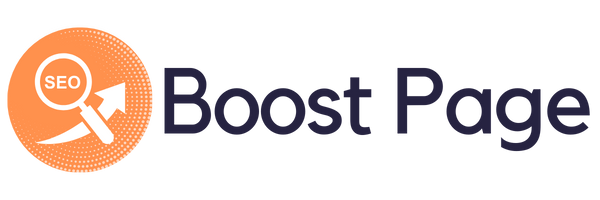
An AI agent is a software system that autonomously performs tasks on behalf of users or other systems, using artificial intelligence to perceive its environment, reason, plan, learn, and act. According to the International Organization for Standardization (ISO), an AI agent is designed to maximize its chances of successfully achieving goals by using AI techniques. It is more than a static program—it senses data, makes rational decisions, and adapts over time.
Unlike traditional software agents that follow fixed scripts, AI agents apply machine learning, reasoning, and memory to make decisions based on context. They act proactively rather than reactively. For example, an AI agent may plan and schedule tasks, fetch information, and adjust based on new inputs, while a traditional agent simply executes predefined responses.
You encounter AI agents daily in:
- Virtual assistants that manage your calendar or emails
- Intelligent chatbots that troubleshoot customer service requests
- Automated workflows that execute complex data analyses
These systems use natural language processing, planning algorithms, and memory mechanisms to function with minimal human input. AI agents can break down complex tasks into subtasks, choose the right tools, monitor progress, and self-correct. This level of autonomy and goal orientation makes them distinct from simple chatbots, as explained by IBM.
How AI Agents Work
AI agents operate by processing environmental inputs, reasoning about goals, and selecting actions to achieve them. They follow a perception–action cycle: sensing the environment through interfaces such as APIs or sensors, reasoning to decide next steps, and executing actions like triggering tools or sending instructions. According to AWS, this loop enables an agent to continuously adapt to new conditions.
Key components include:
- Perception: acquiring data through sensors or software interfaces
- Decision-making model: reasoning through goals, plans, or learned policies
- Memory and state tracking: maintaining context across tasks
- Actuators or action interfaces: executing actions like tool usage or workflow automation
Modern agents often use machine learning and natural language processing to interpret prompts, extract goals, and plan steps. Advanced systems also use agentic reasoning, where the agent self-evaluates and adapts based on real-time feedback. As IBM explains, combining large language models with external tools allows agents to dynamically solve complex tasks across various domains.
Types of AI Agents
| Agent Type | Description | Example Use Case |
| Simple Reflex Agent | Acts on immediate inputs with pre-defined rules | Safety bot stops a robot when an obstacle is seen |
| Model-Based Reflex Agent | Maintains internal state to handle partial observability | Robot mapping and navigation in unknown terrain |
| Goal-Based Agent | Plans actions to achieve explicit goals | Appointment scheduling or route planning |
| Utility-Based Agent | Evaluates trade-offs to maximize utility value | Trading bot balancing risk, return, and cost |
| Learning Agent | Improves behavior through feedback or experience | Recommendation systems or diagnostic tools |
Simple reflex agents rely solely on condition–action rules, making them effective only in fully observable environments. Model-based agents retain internal states, enabling decision-making in dynamic, partially observable situations. Goal-based agents plan toward achieving specific objectives, while utility-based agents assess trade-offs to maximize expected benefits. Learning agents adapt over time by refining decision-making based on new data or feedback, often through reinforcement learning or supervised training, as outlined by IBM.
Applications of AI Agents Across Industries
AI agents are transforming industries by automating complex tasks and improving efficiency. According to research cited by OECD, AI-powered systems enhance productivity and decision-making capabilities worldwide.
- Healthcare: Learning agents support diagnostic systems that identify patterns in medical data, while goal-based agents schedule treatments and coordinate care.
- Finance: Utility-based trading bots execute trades based on real-time market data, and anomaly-detection agents help prevent fraud.
- Transportation: Autonomous vehicles rely on AI agents for navigation, route planning, and collision avoidance. Traffic control agents help reduce congestion in smart cities.
- Cybersecurity: AI agents detect suspicious activity, adapt to evolving threats, and improve network defenses.
- Education: Intelligent tutoring agents personalize lessons, assess student performance, and recommend study paths.
Organizations adopting AI agents report measurable improvements in accuracy, speed, and operational cost savings, aligning with findings from OECD’s AI policy observatory.
Advantages of Using AI Agents
AI agents offer several key benefits:
- Efficiency and automation: Tasks are performed faster and around the clock, freeing humans from repetitive work.
- Reduced human error: Data-driven decision-making lowers the risk of mistakes.
- Enhanced decision support: Agents analyze large datasets quickly and recommend optimized solutions.
- Scalability: Agents can be replicated and deployed across various departments or industries.
- Continuous improvement: Learning agents adapt to new data, improving performance over time.
These advantages help organizations meet operational demands while improving service delivery, as highlighted by IBM.
Limitations and Ethical Concerns of AI Agents
Despite their benefits, AI agents present challenges:
- Bias and fairness: Agents may replicate biases from training data.
- Data privacy and security: Sensitive data handling can raise privacy risks.
- Over-reliance on AI: Critical decisions should retain human oversight.
- Lack of transparency: Complex AI models can be difficult to interpret.
- Unintended behaviors: Poorly defined goals can cause harmful or unexpected actions.
International frameworks such as the OECD AI Principles and ISO/IEC 42001 emphasize fairness, accountability, and transparency to mitigate these risks.
How AI Agents Are Trained and Evolve Over Time
Training AI agents involves several stages:
- Data collection: Gathering high-quality, relevant datasets while ensuring fairness and privacy.
- Model training: Using supervised learning for labeled data or reinforcement learning for goal-driven environments.
- Deployment and feedback: Agents are deployed in real environments to collect new insights.
- Continuous learning: Models are updated with new data, improving accuracy and adaptability.
- Human oversight: Regular reviews ensure alignment with intended objectives and ethical standards.
Over time, agents become more efficient and reliable. Standards like ISO/IEC 42001 recommend organizations implement AI management systems to monitor and govern this process responsibly.
Future of AI Agents
AI agents are evolving rapidly. Trends include:
- Agentic autonomy: Agents capable of setting sub-goals and adapting plans dynamically.
- Multi-agent collaboration: Specialized agents working together to solve complex tasks.
- Cross-modal capabilities: Agents processing text, voice, image, and code simultaneously.
- Regulatory alignment: Compliance with global AI policies, including the EU AI Act and ISO standards.
According to OECD, future development will focus on trustworthy, human-centered AI systems that foster innovation while protecting rights and safety.
Key Organizations and Standards Governing AI Agents
Several organizations set standards and guidelines for responsible AI agent development:
- ISO/IEC JTC 1/SC 42: Develops international AI standards, including ISO/IEC 42001 for AI management systems.
- OECD AI Principles: Provide a global framework for fairness, transparency, and accountability in AI.
- AI Safety Institutes: National and international bodies focused on testing and evaluating AI systems for safety and reliability.
These organizations ensure AI agents are deployed responsibly, balancing innovation with ethical and societal considerations.
Conclusion
AI agents are intelligent, autonomous systems that perceive environments, reason over goals, and take actions with minimal human input. They deliver efficiency, scalability, and enhanced decision-making, transforming industries from healthcare to cybersecurity. However, they also raise challenges such as bias, privacy risks, and transparency issues.
Standards like ISO/IEC 42001 and frameworks such as the OECD AI Principles guide responsible development, ensuring that AI agents align with human values and societal needs. With proper oversight and governance, AI agents have the potential to revolutionize automation while maintaining trust and accountability.





